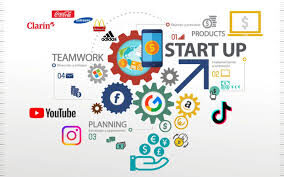Food industrialization is the process of transforming food production from small-scale, manual, and local methods into large-scale, machine-based, and global systems.
It applies industrial principles — such as mechanization, automation, standardization, and mass production — to every stage of the food chain: farming, processing, packaging, and distribution.
⚙️ 2. Historical Background
| Period | Development | Impact |
|---|---|---|
| 18th–19th centuries | Industrial Revolution introduced machines, steam power, and canning. | Increased food production and preservation. |
| Early 20th century | Refrigeration, pasteurization, and chemical preservatives became common. | Longer shelf life, urban food supply growth. |
| Mid–20th century | Green Revolution (fertilizers, pesticides, high-yield crops). | Boosted global agricultural output. |
| 21st century | Automation, biotechnology, and AI in farming and manufacturing. | Focus on efficiency, safety, and sustainability. |
🧰 3. Key Features of Industrialized Food Systems
- Mechanization: Machines replace human and animal labor in planting, harvesting, and processing.
- Mass Production: Food produced on a large scale for global markets.
- Processing & Preservation: Use of canning, freezing, and additives to extend shelf life.
- Standardization: Uniform taste, appearance, and quality across brands.
- Global Supply Chains: Ingredients sourced, processed, and distributed worldwide.
- Technological Control: Data, robotics, and biotech used to increase efficiency and reduce costs.
🌍 4. Positive Impacts
✅ Increased Food Availability — Mass production reduced hunger in many regions.
✅ Lower Costs — Industrial efficiency made food cheaper and more accessible.
✅ Longer Shelf Life — Preservation techniques allow global trade and storage.
✅ Innovation — Advancements in packaging, transport, and safety standards.
⚠️ 5. Negative Impacts
❌ Environmental Damage — Deforestation, soil depletion, and greenhouse gas emissions.
❌ Health Problems — Processed foods high in sugar, salt, and fat contribute to obesity and chronic disease.
❌ Loss of Small Farms — Smallholders struggle to compete with industrial agribusinesses.
❌ Ethical Concerns — Animal welfare, labor exploitation, and resource inequality.
❌ Cultural Homogenization — Traditional and local food practices are disappearing.
🔮 6. The Future of Food Industrialization
The next phase focuses on sustainability, technology, and ethics:
- Smart Farming: Drones, AI, and sensors optimize resources.
- Alternative Proteins: Lab-grown meat, insects, and plant-based options.
- Circular Economy: Reducing waste through recycling and energy recovery.
- Sustainable Packaging: Biodegradable and reusable materials.
- Green Innovation: Low-carbon and regenerative agriculture.
🧾 Summary Table
| Aspect | Description |
|---|---|
| Definition | The shift from manual/local food production to industrial, global systems |
| Goal | Increase efficiency, output, and preservation |
| Benefits | More food, lower cost, longer shelf life |
| Drawbacks | Environmental harm, health issues, loss of tradition |
| Future Focus | Sustainable, ethical, tech-driven production |
